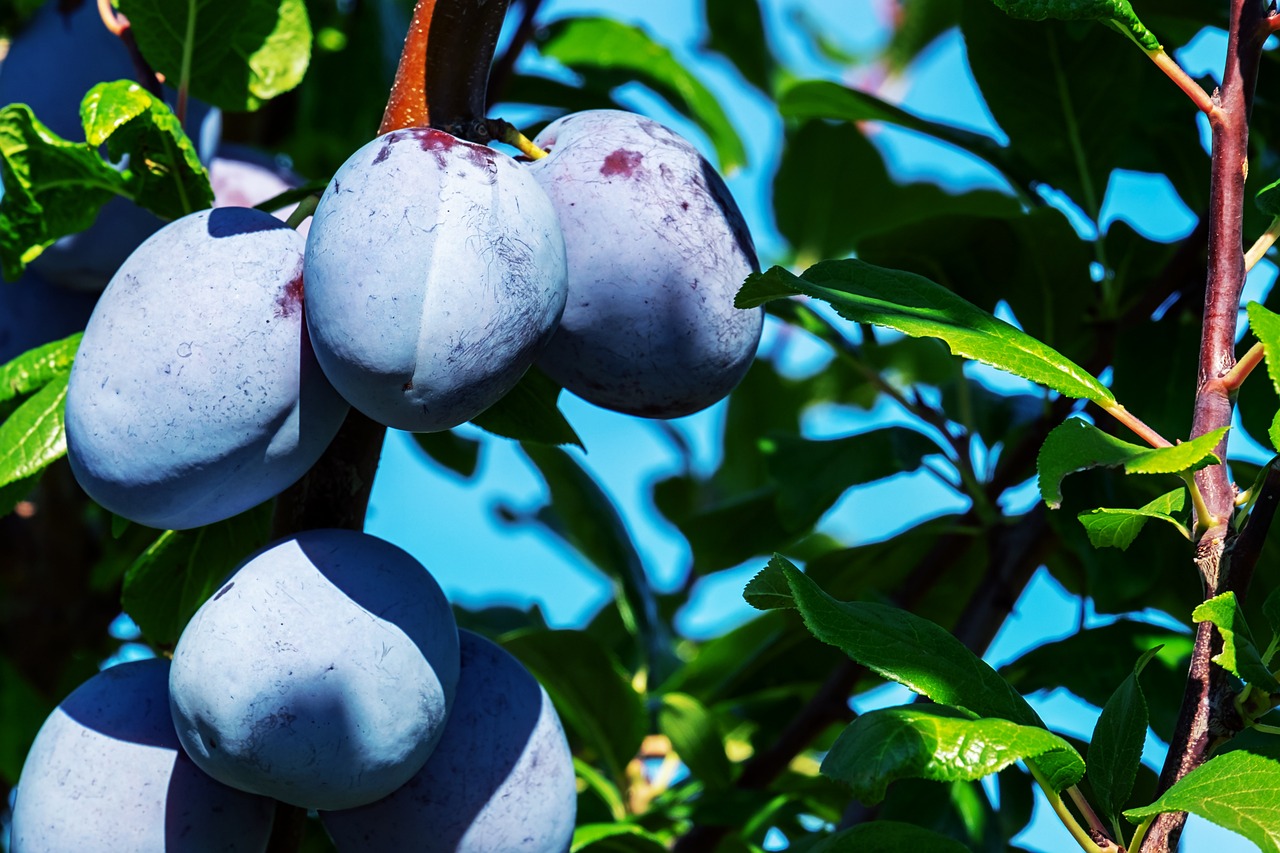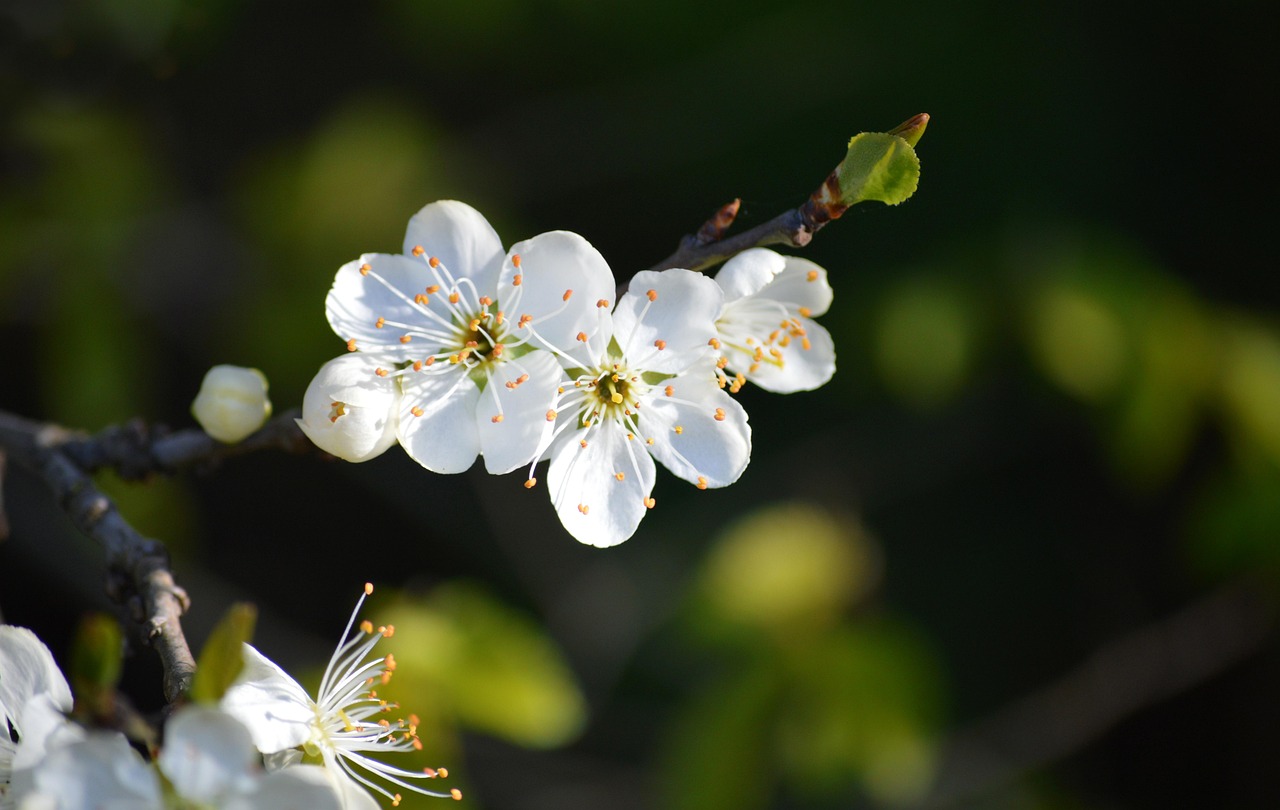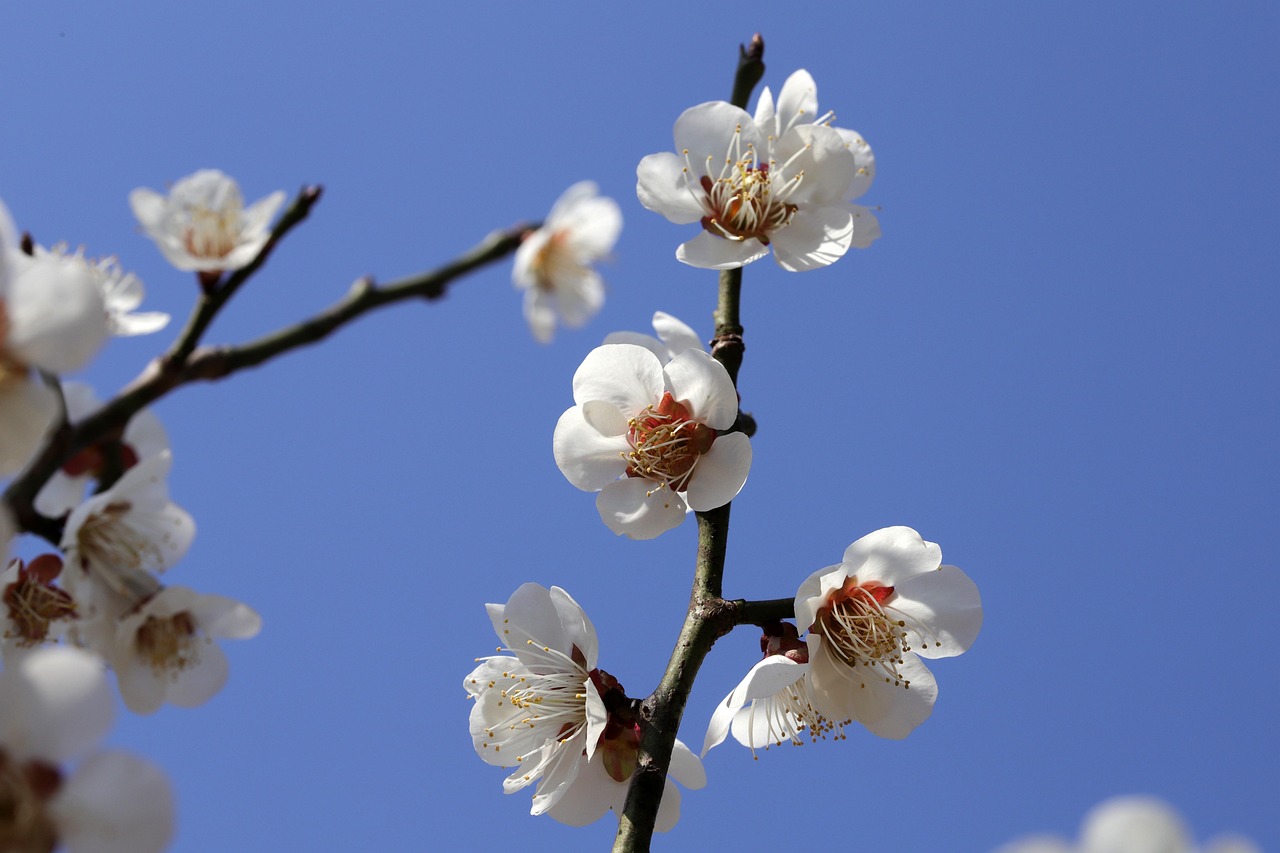Pruning flowering plum trees is essential for promoting vibrant blossoms. This practice enhances air circulation, removes dead or diseased branches, and encourages healthy growth. Proper timing and techniques ensure that the tree blooms beautifully each spring.
Flowering plum trees, known for their stunning blooms and beautiful foliage, are popular choices for landscaping. These trees not only provide aesthetic appeal but also attract pollinators such as bees and butterflies. However, to maintain their health and maximize their blooming potential, regular pruning is necessary.

Pruning involves selectively removing certain parts of the tree, which can include branches, buds, or roots. This process helps control the tree’s shape and size while improving its overall health. Understanding the right time and method for pruning flowering plum trees is crucial for achieving the best results.
The Importance of Pruning Flowering Plum Trees
Pruning is more than just a cosmetic procedure; it plays a vital role in the health of flowering plum trees. Here are some reasons why pruning is important:
- Encourages Blooming: Pruning stimulates new growth, leading to more flowers.
- Improves Air Circulation: Proper pruning opens up the canopy, allowing air to circulate freely. This reduces the risk of diseases.
- Removes Dead or Diseased Wood: Cutting away unhealthy branches helps prevent the spread of pests and diseases.
- Shapes the Tree: Regular pruning maintains a desired shape and size, enhancing its visual appeal.
- Enhances Sunlight Exposure: Pruning allows sunlight to reach more parts of the tree, promoting healthier growth.
Proper pruning techniques can lead to a healthier structure and more abundant blooms. It is essential to understand when and how to prune your flowering plum tree for optimal results.

When to Prune Flowering Plum Trees
The timing of pruning is critical. The best time to prune flowering plum trees is during their dormant season, typically in late winter or early spring before new growth begins. This period allows you to see the tree’s structure without leaves obstructing your view.
Pruning at this time helps minimize stress on the tree and reduces the risk of sap bleeding. However, minor pruning can be done throughout the year to remove dead or diseased branches as necessary.
Tools Needed for Pruning
Before beginning the pruning process, it’s important to have the right tools. Here’s a list of essential tools you should have:

- Hand Pruners: Ideal for small branches and precise cuts.
- Loppers: Useful for cutting larger branches that are too thick for hand pruners.
- Saw: A pruning saw is necessary for very thick branches.
- Gloves: Protect your hands from cuts and scrapes.
- Safety Goggles: Protect your eyes from flying debris while cutting.
Pruning Techniques for Flowering Plum Trees
There are several techniques that can be employed when pruning flowering plum trees. Understanding these techniques will help you achieve the best results:
Thinning
This technique involves removing selected branches to reduce density. Thinning increases light penetration and air circulation within the tree.
Heading Cuts
A heading cut shortens a branch by cutting it back to a bud or another branch. This encourages bushier growth and can lead to more flowers.

Crown Reduction
Crown reduction reduces the height of the tree while maintaining its natural shape. This method is particularly useful for larger trees that may need to be trimmed back for safety or aesthetics.
Removing Suckers
Suckers are shoots that grow from the base of the tree or along the trunk. These should be removed as they take energy away from the main structure of the tree.
Common Mistakes to Avoid
When pruning flowering plum trees, there are several common mistakes that should be avoided to ensure healthy growth and blooming:
- Over-pruning: Removing too much foliage can stress the tree and reduce blooming.
- Poor Timing: Pruning at the wrong time can lead to sap loss and hinder growth.
- Neglecting Tools: Using dull or dirty tools can cause damage to branches and introduce diseases.
- Ignoring Tree Structure: Failing to consider the natural shape of the tree may result in an unnatural appearance.
By avoiding these mistakes, you can ensure your flowering plum tree remains healthy and produces vibrant blossoms each season.
Understanding how to properly prune flowering plum trees is essential for any gardener looking to enhance their landscape. With the right techniques, tools, and timing, you can enjoy a stunning display of blossoms every spring.
Advanced Pruning Techniques for Flowering Plum Trees
As you gain confidence in basic pruning techniques, you may want to explore advanced methods to further enhance the health and beauty of your flowering plum trees. These techniques can help you manage tree shape, improve flower production, and ensure longevity.
Espalier Technique
Espalier is a method of training trees to grow flat against a wall or fence. This technique not only saves space but also creates an eye-catching display of flowers. Here’s how to do it:
- Select a Young Tree: Choose a healthy young flowering plum tree.
- Choose a Structure: Install a sturdy trellis or wire against a wall or fence.
- Train the Branches: As the tree grows, gently tie the branches to the structure, directing them horizontally.
- Regular Pruning: Prune regularly to maintain shape and encourage new growth along the structure.
This technique not only maximizes blooming but also adds a unique aesthetic element to your garden.
Thinning Cuts for Light and Air
Thinning cuts are particularly effective in maintaining a healthy tree structure. By selectively removing branches, you allow more sunlight and air to penetrate the tree, which promotes better flowering. Here’s how to perform thinning cuts effectively:
- Identify Crowded Areas: Look for areas where branches are crossing over or too close together.
- Select the Right Branches: Choose to remove branches that are weak or growing inward.
- Make Clean Cuts: Use sharp tools to make clean cuts at the branch collar, which helps the tree heal faster.
Post-Pruning Care for Flowering Plum Trees
After pruning, it is essential to provide proper care to ensure your flowering plum tree thrives. Here are some crucial steps to follow:
Watering
Providing adequate water is vital after pruning. The tree may experience shock, and proper hydration helps it recover. Follow these guidelines:
- Deep Watering: Water deeply at the base of the tree to encourage root development.
- Avoid Overwatering: Ensure the soil drains well to prevent root rot.
Nourishment
Feeding your flowering plum tree with the right nutrients promotes healthy growth and abundant blossoms. Consider these options:
- Organic Fertilizer: Use a balanced organic fertilizer in early spring for optimal growth.
- Mulching: Apply mulch around the base to retain moisture and suppress weeds.
Pest and Disease Management
Pests and diseases can threaten the health of flowering plum trees. Regular monitoring and management practices can help mitigate these risks. Below are common pests and diseases to watch for:
Common Pests
- Plum Curculio: This beetle can damage fruit and leaves. Use insecticidal soap during early spring.
- Aphids: These small insects suck sap from leaves. Introduce beneficial insects like ladybugs to control their population.
Common Diseases
- Crown Gall: A bacterial disease that causes galls on roots. Remove infected plants and avoid wounding roots during pruning.
- Powdery Mildew: A fungal disease that appears as a white powdery substance on leaves. Apply fungicide as needed.
Seasonal Considerations for Pruning
The seasonal changes significantly affect how and when you should prune your flowering plum trees. Understanding these changes can enhance your pruning strategy.
Spring Pruning
In spring, focus on removing any dead or damaged branches. This is also the time to perform light thinning to encourage new growth without stressing the tree.
Summer Pruning
Summer is an excellent time for minimal pruning. You can remove suckers and water sprouts that appear after spring flowering. This keeps the tree tidy and encourages better air circulation.
Fall Pruning
Avoid heavy pruning in the fall, as it can stimulate new growth that will not harden off before winter. Instead, focus on cleaning up fallen leaves and debris to prevent pests and diseases.
Understanding Flowering Plum Varieties
Different varieties of flowering plum trees may have unique growth habits and blooming characteristics. Here is a brief overview of some popular types:
| Variety | Description | Bloom Color |
|---|---|---|
| Prunus cerasifera ‘Thundercloud’ | Keeps a compact shape with attractive foliage. | Pink |
| Prunus × blireiana | A hybrid known for its double flowers. | Pale Pink |
| Prunus cerasifera ‘Krauter Vesuvius’ | Features dark purple leaves and stunning blooms. | Pinkish-White |
Understanding these varieties allows you to tailor your pruning techniques based on their specific blooming habits, ensuring vibrant blossoms each season.
The art of pruning flowering plum trees requires patience and knowledge. By implementing advanced techniques, providing proper care, managing pests, considering seasonal changes, and understanding different varieties, you can create a flourishing environment for your trees.
Seasonal Maintenance for Flowering Plum Trees
Maintaining flowering plum trees involves more than just pruning. Seasonal care is essential for ensuring the overall health and beauty of the trees throughout the year. Each season brings specific tasks that contribute to optimal growth and blooming.
Winter Care
During winter, flowering plum trees enter dormancy. However, this period is crucial for preparation for the upcoming growing season. Here are some important winter care practices:
- Mulching: Apply a layer of mulch around the base of the tree. Mulch helps insulate the roots, maintaining soil temperature and moisture levels.
- Inspect for Damage: Check for any signs of winter damage on the branches. Remove dead or damaged wood as soon as possible to prevent further issues in spring.
- Watering: Although trees are dormant, ensure they receive adequate moisture if there is a lack of snowfall or rain.
Spring Awakening
As spring approaches, flowering plum trees start to awaken from dormancy. This is a critical time for care and preparation:
- Pruning: Complete any necessary pruning early in the season before new growth begins. Focus on shaping the tree and removing any dead or diseased branches.
- Fertilizing: Apply a balanced fertilizer to promote healthy growth. Spring is the ideal time to give your tree the nutrients it needs.
- Pest Monitoring: Keep an eye out for pests emerging in spring. Early detection can prevent infestations later in the season.
Flowering Plum Tree Aesthetics
Flowering plum trees are not only valued for their blossoms but also for their overall aesthetic appeal. Understanding how to enhance their beauty can add significant value to your landscape.
Choosing Companion Plants
Choosing the right companion plants can enhance the beauty of flowering plum trees. Consider these options:
- Low-Growing Perennials: Plant perennials like lavender or daylilies at the base to create a colorful border without competing with the tree.
- Shrubs: Use flowering shrubs such as azaleas or rhododendrons nearby to provide contrast and extended bloom times.
- Ground Cover: Incorporating ground covers like creeping thyme can help retain soil moisture and suppress weeds.
Seasonal Color Schemes
Creating seasonal color schemes can maximize the visual impact of your flowering plum tree. Here’s how to plan your garden:
- Spring: Pair the tree’s pink or white blossoms with early-blooming bulbs, such as tulips or daffodils, for a vibrant display.
- Summer: Choose plants with lush green foliage that contrasts with the tree’s branches, such as hostas or ferns.
- Fall: Incorporate plants with autumnal colors like ornamental grasses or fall-blooming asters to complement the tree’s changing leaves.
Soil Health and Fertility
The health of your flowering plum tree greatly depends on the quality of the soil in which it grows. Conducting regular soil assessments and making adjustments can lead to vibrant growth and blooms.
Soil Testing
Testing your soil is the first step in ensuring proper fertility. A simple soil test can provide valuable information about nutrient levels and pH. Here’s how to conduct a soil test:
- Pit Depth: Dig a small hole about six inches deep to collect a sample.
- Scoop Samples: Collect samples from various spots around the tree to get an accurate representation.
- Send for Testing: Use a local extension service or commercial lab to analyze your samples.
Improving Soil Quality
If your soil test indicates deficiencies, consider these amendments:
- Organic Matter: Incorporate compost or well-rotted manure to improve soil structure and nutrient content.
- PH Adjustments: Use lime to raise pH levels or sulfur to lower them, depending on test results.
- Nutrient Supplements: Apply fertilizers based on the specific nutrient needs identified in your soil test.
Irrigation Techniques for Optimal Growth
Irrigation is essential for ensuring that flowering plum trees receive adequate moisture, particularly during dry spells. Understanding different irrigation techniques can enhance tree health.
Drip Irrigation Systems
A drip irrigation system delivers water directly to the roots, which is highly efficient. Here are some benefits:
- Water Conservation: Reduces water waste by targeting specific areas.
- Disease Prevention: Minimizes water on foliage, reducing disease risks.
- Consistent Moisture Levels: Provides steady moisture, promoting healthier growth.
Soaker Hoses
If you prefer a simpler method, soaker hoses are an excellent option. They allow water to seep slowly into the soil. Here’s how to use them effectively:
- Placement: Lay soaker hoses around the base of the tree, ensuring even distribution of water.
- Timing: Water early in the morning or late in the evening to minimize evaporation.
By implementing these seasonal maintenance practices, aesthetic enhancements, soil health strategies, and irrigation techniques, you can ensure that your flowering plum trees thrive beautifully throughout the year.
Creating a Thriving Landscape with Flowering Plum Trees
Flowering plum trees are a stunning addition to any landscape, providing beauty and charm throughout the seasons. To maintain their health and vibrancy, it is essential to integrate various care strategies into your gardening routine. From proper pruning to seasonal maintenance, every aspect plays a critical role in the overall vitality of your trees.
Incorporating flowering plum trees into your garden not only enhances the aesthetic appeal but also supports local wildlife. These trees attract pollinators, such as bees and butterflies, fostering a healthier ecosystem. As you nurture your plum trees, you contribute to the biodiversity of your environment.
Integrating Technology in Care Practices
With advancements in technology, gardeners can now utilize smart tools to enhance the care of flowering plum trees. Here are some innovative options:
- Smart Irrigation Systems: These systems adjust watering schedules based on weather conditions, helping conserve water while ensuring your trees receive adequate moisture.
- Soil Sensors: Sensors that monitor soil moisture levels provide real-time data, allowing for precise watering and preventing over or under-watering.
- Garden Apps: Various mobile applications can assist with tracking care schedules, pest alerts, and even identifying plant diseases through image recognition.
Implementing these technologies can streamline your gardening efforts and ensure your flowering plum trees thrive with minimal effort.
Understanding Climate Impact
The climate can significantly affect the health and blooming patterns of flowering plum trees. Understanding how seasonal variations impact your trees will help you adapt your care practices accordingly:
- Temperature Fluctuations: Extreme temperatures can lead to stress in trees. Protecting them from frost during late spring or heat stress in summer is essential for maintaining health.
- Precipitation Patterns: Changes in rainfall can affect soil moisture levels. Adjusting your irrigation practices during periods of drought or heavy rain is necessary to prevent root damage.
- Wind Protection: Strong winds can damage branches and affect the tree’s structure. Planting windbreaks or providing support can mitigate these effects.
Final Thoughts
Caring for flowering plum trees involves a combination of knowledge, techniques, and ongoing commitment. By mastering pruning methods, implementing seasonal maintenance, and understanding the specific needs of your trees, you can enjoy a vibrant display of blossoms year after year.
Remember to consider the overall landscape design when incorporating flowering plum trees. Selecting appropriate companion plants and employing smart technology can enhance the beauty and health of your garden. As you cultivate these stunning trees, you not only enrich your outdoor space but also contribute to a thriving ecosystem.
In conclusion, with careful attention, regular maintenance, and an understanding of environmental factors, flowering plum trees can provide an enchanting focal point in any garden. Embrace the art of pruning and care to experience the full beauty of these remarkable trees.
Your commitment to nurturing flowering plum trees will yield rewards in both aesthetics and biodiversity, making your garden a welcoming haven for both you and local wildlife.
